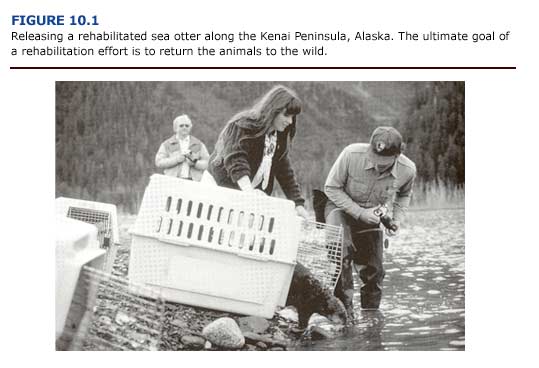According to the U.S. Fish and Wildlife Services’ (USFWS) Response Plan for sea otters (USFWS, in preparation), in the event of an oil spill, the decision to release sea otters from rehabilitation centers following treatment will be linked to the decision on whether to capture sea otters for treatment. Assuming a scenario similar to the Exxon Valdez oil spill (EVOS), once the decision to capture sea otters is made, the ultimate goal is to return as many sea otters to the wild as possible, even though the rescue may not be expected to produce results significant at the population level. The decision by the USFWS to proceed with capture, rehabilitation, and release will be made on a case-by-case basis (USFWS, in preparation). Many factors will influence the decision. Perhaps the most important factors in deciding when and where to release sea otters are the location and availability of suitable release sites and verification that the otters are free of diseases that might be transmitted to the wild population.
Alternative release strategies for sea otters will be contained in the sea otter response portion of the USFWS’s oil spill contingency plans for Alaska and California that are being developed as required by the Oil Pollution Act of 1990. Public review of these plans before they are implemented will help to reduce public concern about the survival of rehabilitated otters, their biological effect on the release area, and the potential introduction or spread of diseases into the wild sea otter population.
The objective of this chapter is to review alternative strategies for the disposition of rehabilitated sea otters. Our assumption is that returning as many animals to the wild as possible, whether it be for humanitarian or biological reasons, is the ultimate goal of this effort (Figure 10.1).


